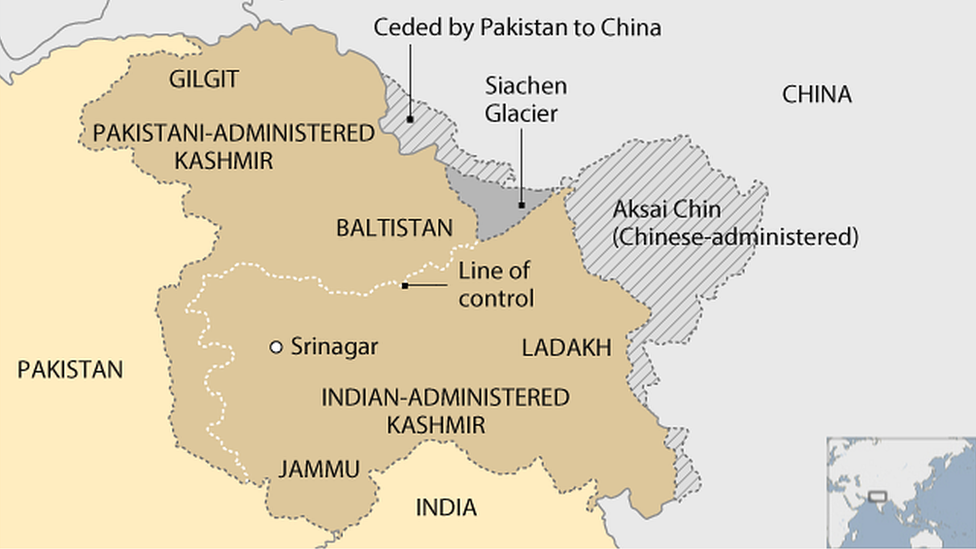Kashmir conflict: Tension on the India Pakistan border
- Published
Shaimaa Khalil joins the Pakistani military to view the sites of supposed "surgical strikes" along the LOC.
Kashmir's Line of Control is the de facto border between India and Pakistan in the contested region, where tensions have been high since a recent militant attack. The BBC's Shaimaa Khalil joined the Pakistani military to see the damage for herself.
The lush green mountains through which the Line Of Control (LOC) runs can be misleading.
They might look tranquil and scenic on the surface but they are dotted with army checkpoints, both on the Pakistani and Indian sides of the de facto border.
The LOC is one of the most heavily militarised frontiers in the world - and it's also one of the most restricted areas.
Journalists aren't allowed anywhere near the area without military supervision.

A soldier stands guard facing the invisible line separating the two regions
We were taken by the Pakistani army to two of the areas India claims to have hit in a surgical strike earlier this week: Baghsar and Tatta Pani.
The Pakistani army dismissed Indian claims of a surgical strike shortly after India announced it.
They said it was an "illusion" India is trying to feed its media - and they flew local and foreign media to frontline to reiterate that point.
"We brought you here to so you can see for yourself," said Lieutenant General Asim Bajwa, the Pakistani army spokesman.
The army played down the scale of the attack, but not the Indian aggression.
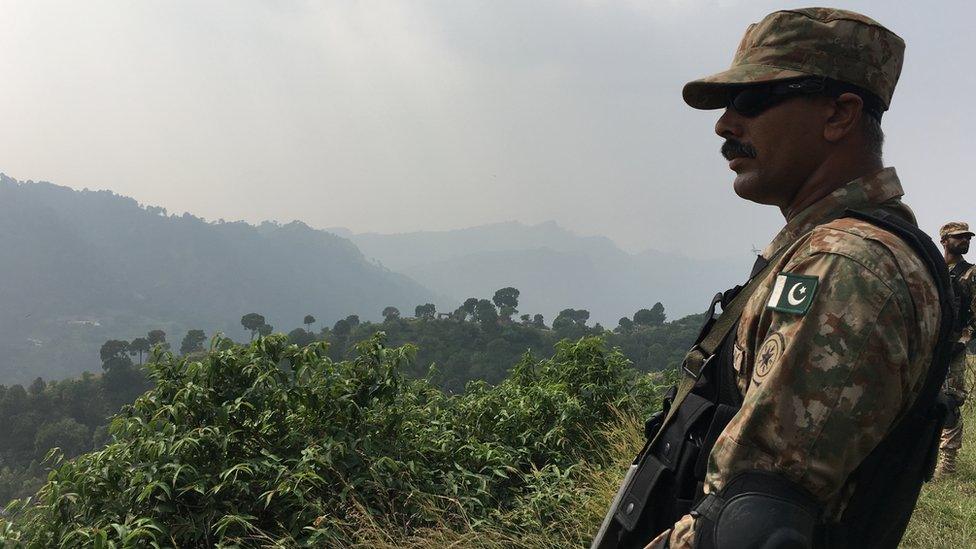
Both sides of the border are heavily guarded, and watch each other closely
They showed us exactly where, across the Line of Control, the cross-border firing came from, all while maintaining that they were responding to unprovoked violations of the LOC.
"Ever since the LOC become a reality and ever since the ceasefire agreement there have been cross-fire violations," Lt General Bajwa said.
But he was adamant that Indian soldiers did not cross the border to attack Pakistani positions. Reports of an Indian soldier who inadvertently crossed over to Pakistan were a different matter.
"Inadvertent crossing is routine. We have a procedure. We verify their identification and send them back. We need time in order to ascertain this," he added - and said that there are low-level talks with the Indian side about this.
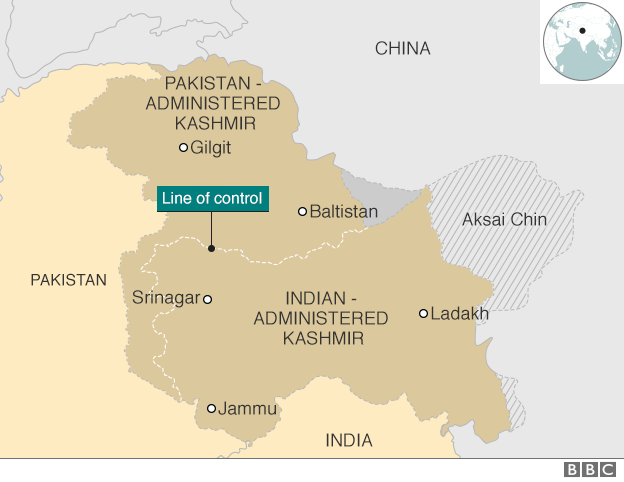
The recent clashes sparked fears of escalation between India and Pakistan, especially with reports of a military build-up and village evacuation on the Indian side.
But Lt General Bajwa said Pakistan is "in no mood to initiate" any attacks, especially with a campaign against Taliban militants still ongoing in the tribal areas on the western border.
"It'll be very unfortunate if we pull out troops from there and bring them on the eastern border," he said.
"But if anything is initiated from their side it will get a very comprehensive response."
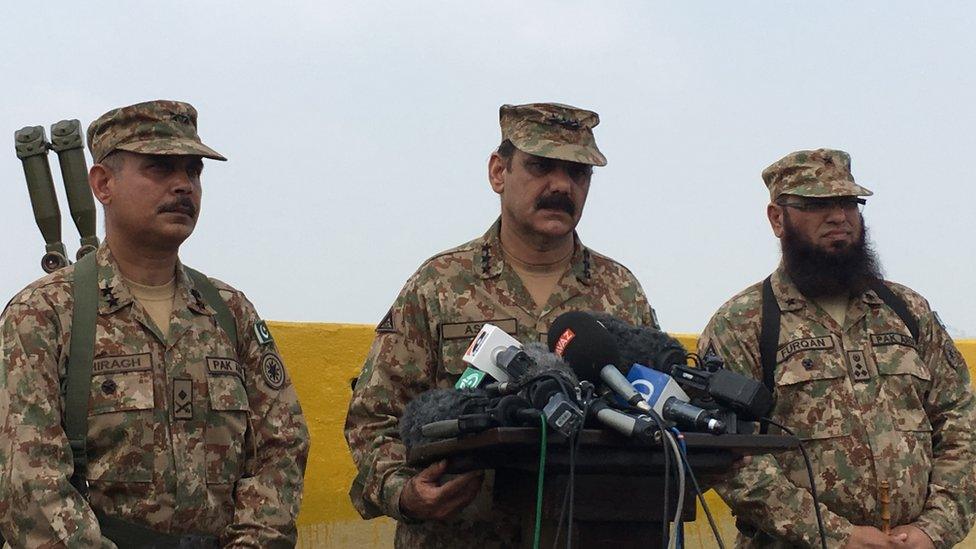
"We only saw what we were shown" - journalists are not allowed along the LOC alone
As we were getting ready to be taken to the second location, one of the senior officers accompanying us said that had there been a "surgical strike" - as India claims - there would have been many more dead bodies and a lot more damage.
The area seemed intact, but if there were more dead bodies we would have no way of knowing. We only saw what we were shown.
At Tatta Pani, a beautiful and scenic area where a river bed separates residents from Indian military positions in the hills, I met Barakat Ali Khan, a shop owner who has lived in the village all his life.
He saw the military personnel around us and put on a brave face.
Still, he couldn't deny the effect these flare-ups have had on him and his family.
Mr Khan lives right across the Line of Control. He can't see the Indian army positions but he knows they are there.
"Our lives and businesses are always disrupted by the Indian shelling but we're not scared," he said. "We'll never leave this place."
The Pakistani army wants to send a message of calm and resolve, but as with every stand-off in Kashmir, the fear of escalation always lies between the two nuclear-armed states.
- Published20 September 2016
- Published19 September 2016

- Published19 September 2016
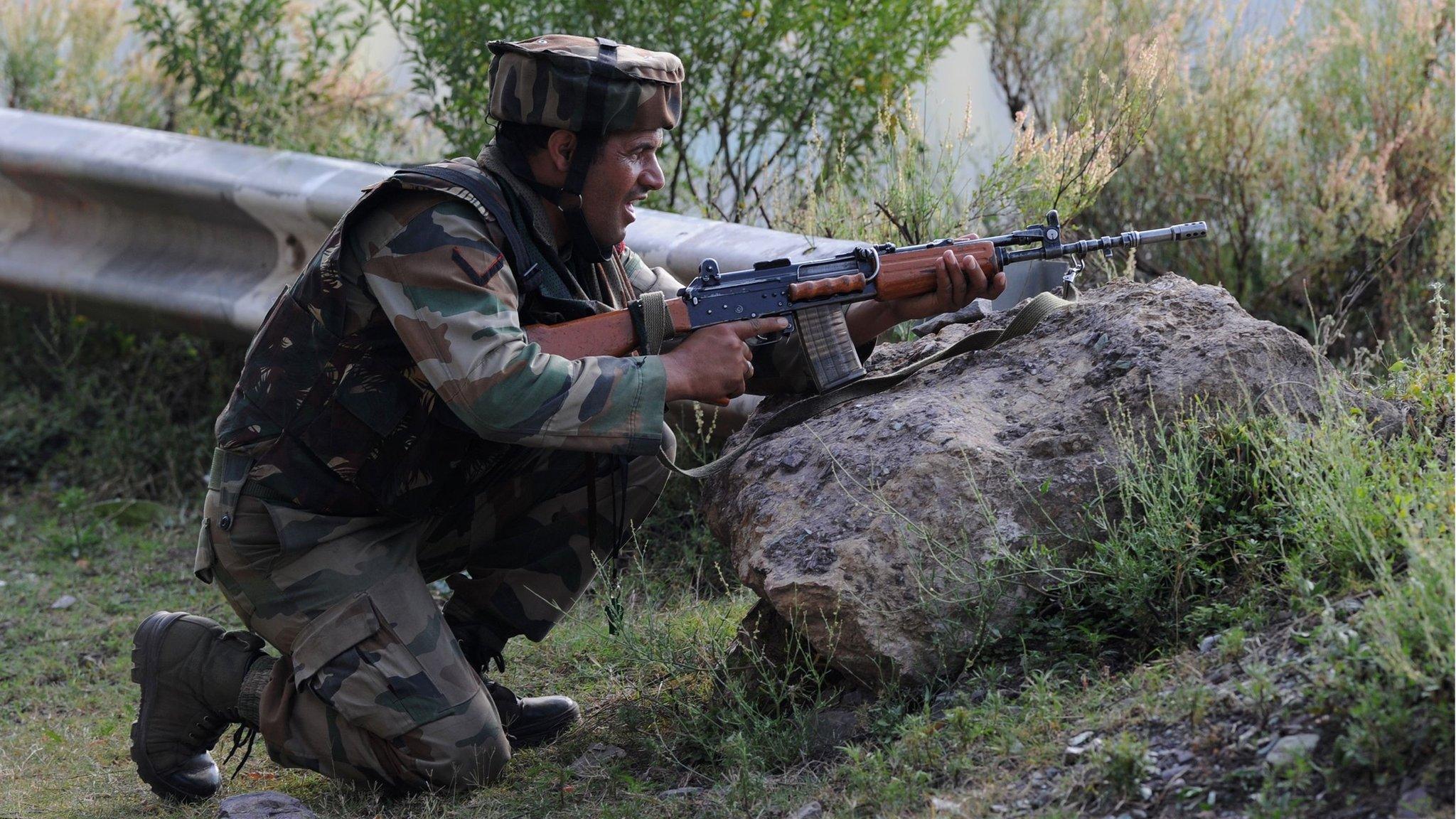
- Published10 March
